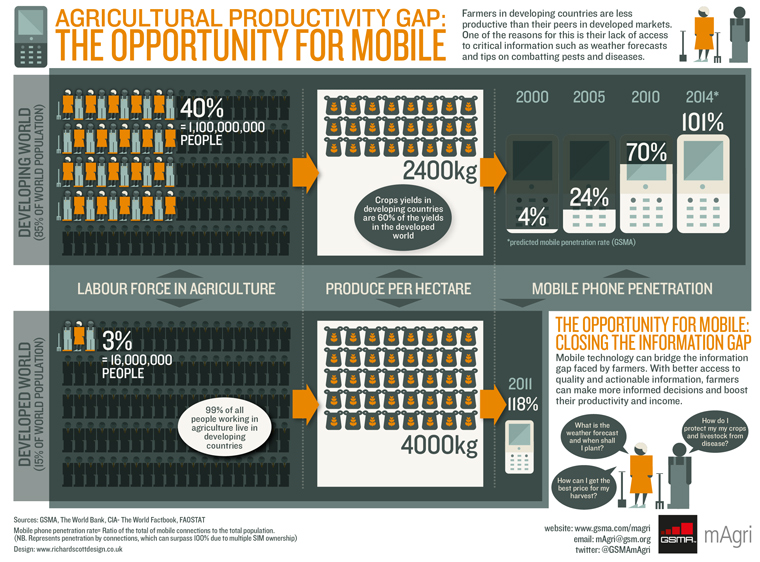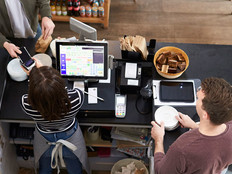Mobile Can Help Bridge the Agricultural Productivity Gap [#Infographic]
The developing world surpasses the developed world by leaps and bounds when it comes to population, but the extra bodies don’t mean an extra boost in agricultural productivity.
The GSM Association (GSMA), an association of mobile operators, outlines what it refers to as the “Agricultural Productivity Gap” in a new infographic.
The developing world makes up 85 percent of the world’s population, but the crop yields by farmers in the developing world are only 60 percent of those of farmers in the developed world.
The productivity issues in the developing world are not due to a lack of effort: 99 percent of all people working in agriculture live in developing countries.
More than anything, the developing world suffers from a lack of access to critical information. Farmers in the developed world can easily use technology, and specifically the Internet, to look up everything from weather forecasts to tips for combatting pests. Farmers in the developing world do not have this luxury.
The infographic hails mobile technology as a way for the developing world to bridge the information gap. It’s no wonder: GSMA predicts the mobile penetration rate in the developing world will reach up to 101 percent by 2014. Access to mobile technology can provide farmers in the developing world with the information they need anytime, anywhere to make more informed decisions about their crops.
To learn more about the agricultural productivity gap, read the full infographic below.








